Hi! It’s konkaz (@konkazuk).
The book I’m introducing this time is “End Times“, written by Peter Turchin, who, together with his colleagues, has pioneered the field of “Cliodynamics“.
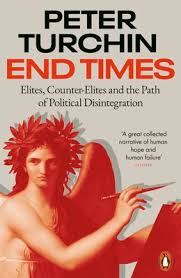
This fascinating book provides a clear explanation of the causes and warning signs of revolutions worldwide, along with the historical trajectories of America’s Democratic and Republican parties, intertwined with the history of economic inequality.
This recently published book from 2023 provides timely and important insights into the reasons behind Trump’s presidential victory, making it relevant and deeply worrying at the same time.
For those interested, feel free to read on.
What is “Cliodynamics”?

Cliodynamics, proposed by Peter Turchin in the 21st century, is a relatively new field of study.
It is a cutting-edge area of study that blends history and science, using mathematical models and statistical analysis to study social trends and the movements of civilizations in the past.
In other words, the idea is to use statistical analysis to identify trends behind events like revolutions, riots, wars, and societal inequality – situations that lead to the loss of many lives – in hopes of preventing them before they occur.
However, from the perspective of cliodynamics, the unfortunate reality is that the era we are living in is precisely one of those dangerous periods where revolutions and uprisings are highly likely.
Elite overproduction
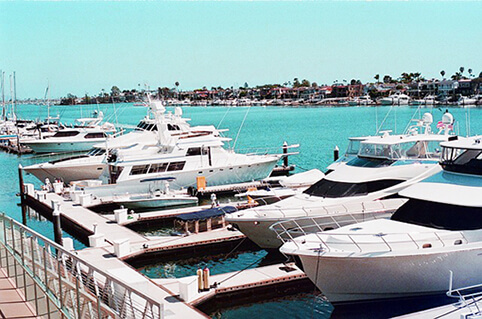
In this book, the term “elites” appears frequently, but it doesn’t imply “bright, top-performing individuals” in the academic sense.
Instead, it refers to…
“people in social positions with the power to influence others“.
Turchin uses the phrase “the social pyramid has grown top-heavy” to describe the overproduction of elites in modern society, particularly in the United States.
He cautions that this structure is historically a precursor to dangerous periods of social unrest.
I came across some intriguing terminology that divides the wealthy into subcategories, so I’ve listed it below.
Decamillionaire
Individuals with a net worth of $10 million or more (roughly 1.4 billion yen)
Centimillionaire
Individuals with a net worth of $100 million or more (roughly 14 billion yen)
Billionaire
Individuals with a net worth of $1 billion or more (roughly 140 billion yen)
… And as for “Decamillionaires”, back in the 1980s, they made up just 0.08% of the U.S. population, but by 2019, that figure had swelled to 0.54%.
Meanwhile, the income and wealth of the average household have actually been on the decline…!!!
At this rate, the middle class that once formed the center will disappear, leaving society split into three groups…
the state,
the elites,
and
everyone else!
For a nation to increase its wealth, it needs to allocate a portion of its GDP towards the elites to foster corporate growth.
Yet, excessive focus on elite growth ends up extracting wealth from everyday citizens.
At the end of the day, by taking wealth from ordinary citizens and giving it to the elite, the rich get richer while the poor become poorer.
The course of events leading to revolution and riots
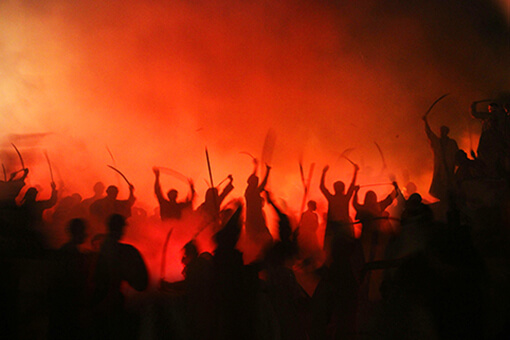
Considering past historical events, if we trace the path towards revolution and riots in today’s America, it unfolds as follows.
As previously mentioned, when elite overproduction occurs, competition for the limited positions of power intensifies, leading to political, economic, and social instability.
On the other hand, factors such as rising rents, low-wage labour, and increasing food prices extract the income and assets of ordinary citizens and concentrate them among the wealthy, widening economic inequality. As a result, the populace falls into a state of popular immiseration.

A typical example is when students take on significant debt to afford high tuition fees, graduate burdened with loans, and are unable to secure employment, leading to a tough predicament.
On top of that, the elite seek to control the nation and use their financial power to manipulate the media.
With words that seem to resonate with people’s everyday struggles, they gain the trust of the people, ultimately driving out politicians and taking over leadership positions themselves. (Incidentally, Donald Trump, elected president in 2016, was the first individual in U.S. history to become president without prior service in public office.)
By the time the public becomes aware of their unchecked actions, it is already too late to reverse the consequences.
Once the discontent of ordinary citizens reaches its peak and, with no financial resources at their disposal, they are left with no option but to resort to force, ultimately leading to bloody uprisings, revolutions, and wars.
Nobody knows what the future holds for America, but in the past, events such as the chaos following the Black Death in medieval Europe (14th century), the French Revolution (18th century), the Taiping Rebellion, the American Civil War (19th century), the Russian Revolution (20th century), and the Arab Spring (21st century) were all driven by the…
overproduction of elites
and
popular immiseration.
Therefore, it is entirely possible that contemporary America could face a similar outcome.
However, in the early 20th century, the overproduction of elites and popular immiseration also led to riots across America. At that time, however, the frightened elites accepted the demands for systemic reforms from the desperate and furious citizens, and the crisis was ultimately averted with Franklin Roosevelt’s introduction of the New Deal.
Mr. Tarchin hopes that, once again, the elite will recognise the situation and step back, leading to a peaceful resolution.
He prays that his predictions are ultimately proven wrong.
What will happen to America?
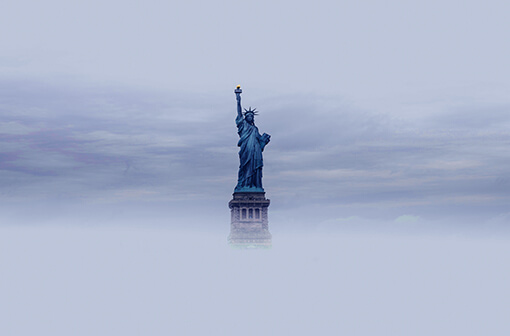
To tell you the truth, the timing when I finished reading this book coincided exactly with the results of the U.S. election, and I was so shocked that I ended up feeling really down for some time.
I probably was giving off an aura of despair at work as well. 💦
Is America a “Plutocracy”?
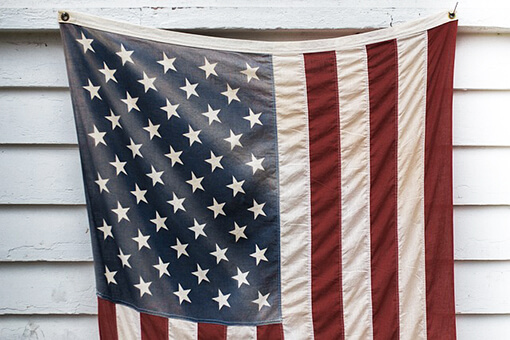
This book becomes even more fascinating from around Chapter 5, as waves of insights come flooding in. So, I’ve taken a moment to summarise some of the terms introduced here.
① Democracy
A system where the people have the ultimate power and choose their representatives through elections.
② Autocracy
A regime where one leader holds absolute power, such as modern North Korea.
③ Anocracy
A mix of democracy and autocracy, often unstable.
④ Aristocracy
A system where the ruling class is determined by aristocratic lineage or nobility.
⑤ Kleptocracy
A corrupt regime where leaders use their power to exploit the country’s wealth for themselves.
⑥ Militocracy
A political system where governance is led by military leaders, often following a military coup.
⑦ Meritocracy
A social system where power and positions are granted based on individual ability and achievement.
⑧ Oligarchy
A political system where power is concentrated in the hands of a small group of individuals or elites.
⑨ Plutocracy
A system where the wealthy capitalist class holds political power.
There are still many other words ending in “-cracy”, but these are the key ones to keep in mind when reading this book.
In capitalist societies, the idea behind meritocracy – ⑦, where “effort is rewarded accordingly”, was originally the foundation. However, due to the overproduction of elites in many countries today, it is unfortunate that in quite a few places, people find themselves in a situation where their hard work no longer pays off.
It’s worth noting that Oligarchy – ⑧, which refers to “rule by a few“, is often confused with Plutocracy – ⑨. (Additionally, Oligarchy – ⑧ is frequently associated with the term “Oligarch”, used to describe the super-wealthy individuals who amassed massive fortunes by seizing state enterprises after the fall of the Soviet Union. Keep these distinctions in mind!)
So, is America a Plutocracy?
To get straight to the point, it absolutely is a “Plutocracy“.
Let’s take a step back in history.
When the Union, led by Abraham Lincoln and representing the Republican Party, defeated the Confederacy of the Southern Democrats—who had built their wealth on slave-driven cotton production—in the Civil War that began in 1861, America entered its Second Industrial Revolution.
With the Union’s victory in the war, the abolition of slavery and the expansion of railroads accelerated, driving industrialization across the nation and economic growth centered in the North. It was during this time that industrial tycoons like J.P. Morgan (banking), John D. Rockefeller (oil), and Andrew Carnegie (steel) emerged, building massive fortunes.

Between 1860 and 1870, the number of millionaires in America skyrocketed from just 41 to an astonishing 545, according to records.
As a result, these wealthy individuals began to influence politicians to ensure things worked in their favour, and eventually, the government became nothing more than a tool for their interests.
Moreover, business elites and politicians began to associate with each other, with their children attending the same schools, joining the same clubs, and increasingly marrying within their circles. This led to a complete “Plutocracy” (rule by the wealthy).
Subsequently, as I mentioned before, the Great Depression triggered a wave of uprisings from the working class, leading the government to introduce the New Deal policy.
Consequently, the wealthy pulled back, and a period without Plutocracy followed. However, with President Reagan’s promotion of free-market policies in the 1980s, the elite gradually accumulated vast fortunes, leading to a resurgence of economic inequality.
In 2021, roughly 12,000 companies, particularly those in the fields of pharmaceuticals, electrical engineering, and insurance, are said to have invested an immense $3.7 billion to lobby the government.
Today, figures like Trump and Elon Musk have seized power, leading the nation back into a state of Plutocracy.
The course of events leading up to now and the outlook for the future
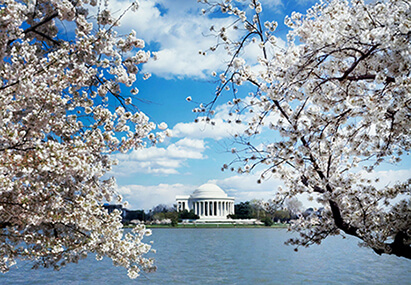
Throughout this book, the term “wealth pump” frequently appears, referring to an economic structure that concentrates wealth among the elite by suppressing workers’ wages or shaping tax and regulatory policies to benefit certain groups.
To put it simply, it means “a structure where wealth flows from everyday people to those in the elite class”.
The critical situation America faces in the 21st century stems entirely from this “wealth pump”. To consolidate it, the elite invest vast amounts of money and establish ultra-conservative organisations such as Charles Koch, the Mercer Family, the Sarah Scaife Foundation, and the Heartland Institute to sabotage those who oppose them.
Furthermore, individuals like George Soros are said to channel funds into the judicial system, solidifying a system that legally benefits them when disputes emerge.
Additionally, during Bill Clinton’s presidency, the Democratic Party, which had traditionally supported the working class, transitioned from a left-wing position to a more centrist one and adopted policies more favourable to the elite.
As a result, many working-class individuals were left behind, and the Democratic Party transformed into a party primarily representing the wealthy, specifically the top 10% of the American population.
Meanwhile, the Republican Party led by Trump prioritizes the interests of the top 1% of the ultra-wealthy, meaning that, in effect, the remaining 90% of the general public are excluded from the policies of both parties.
These political movements are not unique to America; similar trends can also be seen in various European countries.
Tarchin’s analysis is not just a warning about contemporary society but also includes concrete proposals for the future. I hope that many people will pick up his book, gain a deeper understanding of the current social crisis, find ways to break through the deadlock, and begin searching for paths toward a better future.
Anyway, thank you for taking the time to read this until the very end.
Until next time.
konkaz
*You can read this blog post in Japanese from the link below.
👉 なぜ「エリートの過剰」が社会を崩壊に導くのか -『エンド・タイムズ』の核心

